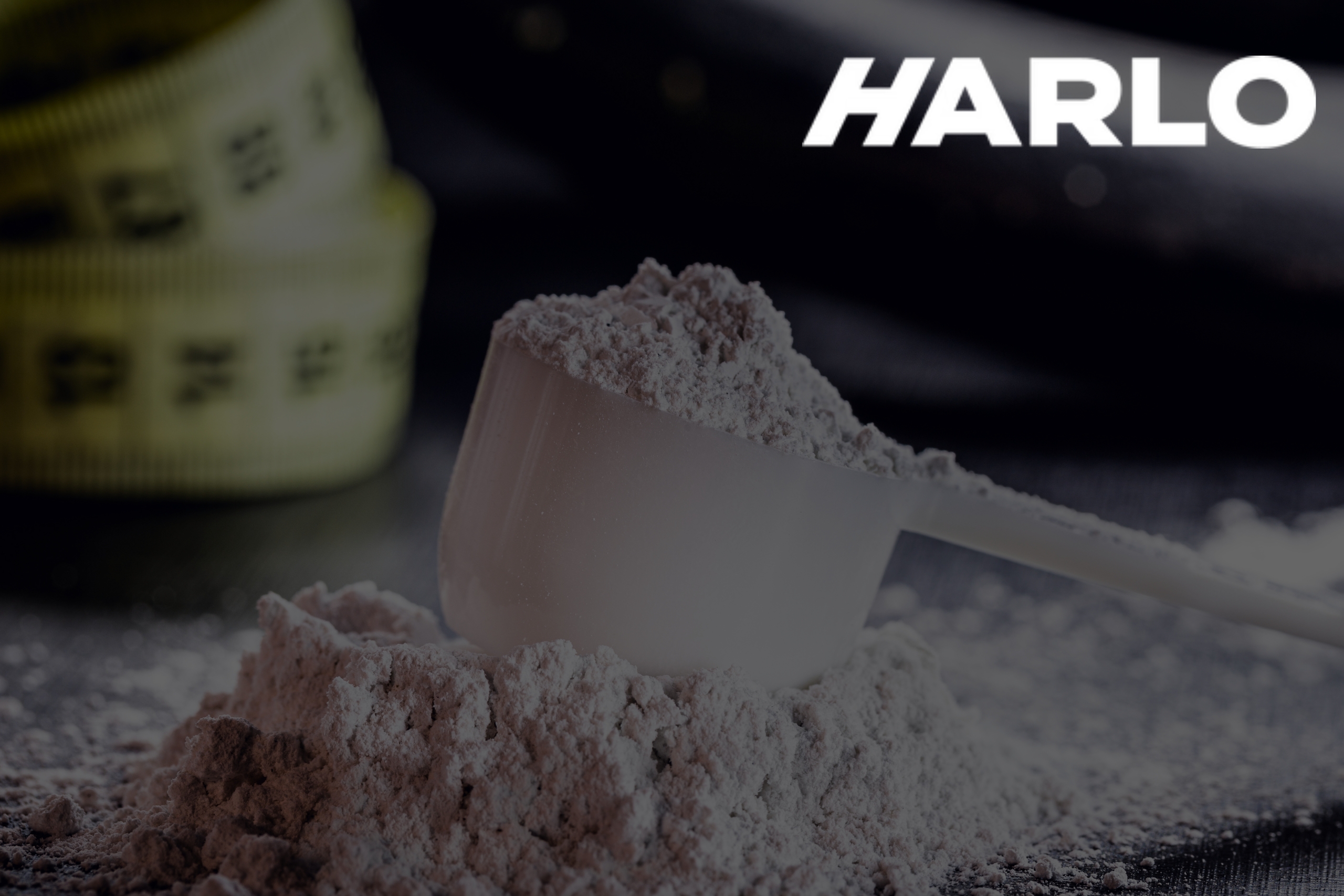Physical fitness is the ability to carry out daily activities with vigor and without undue fatigue. It involves a combination of cardiovascular fitness, muscular strength and endurance, and flexibility. Engaging in regular physical activity can help improve one’s overall health and well-being. It has been linked to a range of health benefits, from reducing the risk of chronic diseases such as heart disease and certain types of cancer to improving mental health and boosting energy levels. Additionally, physical fitness plays a crucial role in maintaining a healthy weight, building strong muscles and bones, and enhancing brain health. Whether it’s through aerobic exercises, strength training, or simply incorporating more physical activity in our everyday lives, starting a fitness routine can have a positive impact on our quality of life. So if you’re looking to improve your overall health, reduce the risk of various medical conditions, and increase your energy levels, starting physical fitness is undoubtedly a step in the right direction.
Benefits of Physical Fitness
Regular physical fitness offers a multitude of benefits that positively impact our overall well-being. Engaging in physical activity not only enhances our energy levels, but also strengthens our mental health, improves our sex life, promotes heart health, and lowers blood pressure.
One of the most noticeable benefits of physical fitness is an increase in energy levels. Regular exercise helps boost blood flow and oxygen supply to our muscles and tissues, resulting in improved stamina and vitality throughout the day.
Engaging in physical activity also has a significant impact on our mental health. Exercise stimulates the release of endorphins, also known as the “feel-good” hormones, which can help reduce symptoms of depression, boost mood, and enhance overall well-being. It also serves as a form of stress relief, allowing us to clear our minds and improve our mental clarity.
Additionally, physical fitness can greatly contribute to a better sex life. Regular exercise improves cardiovascular health, increases blood flow, and enhances endurance, leading to improved sexual performance and satisfaction.
Furthermore, engaging in physical activity regularly helps promote heart health and lower blood pressure. Aerobic exercise strengthens the heart muscle, improves blood circulation, and reduces the risk of heart disease. It also aids in maintaining healthy blood pressure levels, reducing the risk of hypertension.
Types of Physical Activity
When it comes to physical fitness, various types of physical activities can be incorporated into our daily routines to reap numerous health benefits. These activities can be categorized into different forms, including aerobic activity, muscle-strengthening activity, and everyday activities. Aerobic activities, such as brisk walking, jogging, swimming, or cycling, get our heart rate up and help improve cardiovascular health. Muscle-strengthening activities, like weightlifting or resistance training, help build and tone muscles, increase bone density, and improve overall strength. Additionally, engaging in everyday activities such as gardening, house cleaning, or taking the stairs instead of the elevator can also contribute to our daily exercise goals. By incorporating a variety of physical activities into our regular routines, we can enhance our fitness levels and enjoy a healthier, more active lifestyle.

Aerobic Activity
Aerobic activity, also known as cardiovascular exercise, is an important component of physical fitness. It involves continuous, rhythmic movements that increase heart rate and breathing rate, improving cardiorespiratory fitness.
Engaging in aerobic exercise regularly offers numerous benefits. It strengthens the heart and lungs, improving their efficiency and increasing overall stamina. This facilitates better oxygen and nutrient delivery to the muscles, enhancing their performance and endurance. Additionally, aerobic activity aids in weight management by burning calories and promoting fat loss.
Various forms of aerobic exercise cater to different preferences and fitness levels. Brisk walking is a low-impact option that can be easily incorporated into daily routines. Running, cycling, swimming, and aerobic fitness classes provide higher-intensity options for those seeking more vigorous workouts. Other enjoyable activities such as playing tennis, dancing, doing yard work, or jumping rope can also contribute to aerobic fitness.
To improve cardiorespiratory fitness, it is recommended to engage in at least 150 minutes of moderate-intensity aerobic activity or 75 minutes of vigorous-intensity aerobic activity per week. Alternatively, a combination of both moderate and vigorous activity can be undertaken to meet the weekly activity target.
Muscle-Strengthening Activity
Muscle-strengthening activities are an essential component of a well-rounded fitness routine. These activities not only increase muscle mass and strength but also promote healthy bone density, reducing the risk of injury and preventing conditions like osteoporosis.
Weightlifting is one of the most effective muscle-strengthening activities. It involves lifting weights, either free weights or using weight machines, to target specific muscle groups. This type of activity helps build strong muscles, improving overall physical performance and enhancing athletic abilities.
Resistance training is another form of muscle-strengthening activity that can be done using resistance bands, bodyweight exercises, or weight machines. It involves pushing or pulling against resistance to work and strengthen muscles. Examples include push-ups, squats, lunges, and planks.
Engaging in regular weightlifting and resistance training can increase muscle mass, helping to improve metabolism and burn calories even at rest. Having strong muscles also supports joint stability and balance, reducing the risk of falls and injuries.
Moreover, muscle-strengthening activities have a positive impact on bone health. Resistance training stimulates the production of new bone tissue, increasing bone density and reducing the risk of osteoporosis.
To reap the benefits of muscle-strengthening activity, it is recommended to engage in such exercises at least twice a week, targeting all major muscle groups. Make sure to choose appropriate weights or levels of resistance, gradually increasing the intensity as you build strength and confidence.
Moderate-Intensity Exercise
Moderate-intensity exercise is an essential component of physical fitness, offering numerous benefits for overall health and well-being. This type of activity, which raises your heart rate and makes you breathe harder, contributes to a more active lifestyle and enhances the quality of life.
Engaging in moderate-intensity exercise has been shown to lower the risk of chronic diseases such as heart disease, high blood pressure, and certain types of cancer. It helps control weight, improve cardiovascular health, and increase energy levels. Regular participation in moderate-intensity exercise also promotes mental health by reducing symptoms of depression and anxiety and improving brain function.
Examples of moderate-intensity exercise include brisk walking, leisurely cycling, swimming, and dancing. These activities can easily be incorporated into daily routines and are suitable for people of all fitness levels.
To achieve health benefits, adults are recommended to engage in at least 150 minutes of moderate-intensity exercise per week, spread across several sessions. It is suggested to aim for 30 minutes of moderate-intensity exercise on most days of the week. Additionally, combining moderate-intensity exercise with muscle-strengthening activities further enhances physical fitness.
Vigorous Activity
Vigorous activity is an essential component of physical fitness as it provides numerous health benefits. It is defined as a type of physical activity that requires a high level of effort and causes a substantial increase in heart rate.
Engaging in vigorous activity contributes to improved cardiovascular health by strengthening the heart, increasing blood flow, and reducing the risk of heart disease. It also promotes energy expenditure, aiding in weight management and the maintenance of a healthy weight.
Furthermore, vigorous activity is effective in preventing chronic diseases such as diabetes, certain types of cancer, and obesity. It helps to maintain healthy blood pressure levels, reduces the risk of metabolic disorders, and promotes optimal functioning of the body systems.
Examples of vigorous activities include running, swimming laps, high-intensity interval training (HIIT), cycling at high speeds, and playing sports such as basketball or soccer. These activities push individuals to their limits, challenging both aerobic fitness and muscular strength.
Incorporating vigorous activity into your weekly exercise routine is crucial for overall physical fitness and wellness. The American Heart Association recommends at least 75 minutes of vigorous-intensity aerobic activity per week. So, whether it’s sprinting, playing a sport, or joining a HIIT class, make sure to include vigorous activity to reap the maximum health benefits.
Enhancing Quality of Life
Physical fitness plays a crucial role in enhancing the overall quality of life. Engaging in regular exercise and physical activity not only contributes to improved physical health but also has a positive impact on mental well-being and social connections. Research has shown that individuals who incorporate physical fitness into their lifestyle experience numerous benefits that enhance their overall quality of life. Regular exercise has been found to improve mood, reduce stress and anxiety, and contribute to a better sense of well-being. It also helps to improve cognitive function, memory, and brain health. Additionally, physical fitness provides opportunities for social interaction and engagement, whether through participating in group sports or joining fitness classes. By prioritizing physical fitness and engaging in regular exercise, individuals can significantly enhance their overall quality of life, experiencing increased energy levels, improved physical and mental health, and a greater sense of happiness and fulfillment.
Improved Energy Levels
When you exercise, your heart rate increases, improving blood flow throughout your body. This increased blood flow delivers more oxygen and nutrients to your muscles, providing them with the energy they need to function optimally.
Regular exercise also contributes to improved heart and lung health, making your body more efficient at using energy. As your cardiovascular system becomes stronger, it can deliver oxygen to your working muscles more efficiently, allowing them to perform tasks without unnecessary strain, which can lead to fatigue.
Furthermore, regular physical activity has been shown to increase energy levels and reduce feelings of fatigue in individuals, including those with medical conditions. Engaging in moderate-intensity aerobic activity, such as brisk walking or cycling, for at least 150 minutes per week can make a significant difference in energy levels and overall well-being.
By following physical fitness guidelines and incorporating exercise into your daily routine, you can experience increased energy levels and reduced fatigue. Whether you choose to engage in aerobic activities, strength training, or other forms of physical activity, the benefits of improved energy levels are undeniable. So, start your fitness journey today and embrace the numerous advantages that regular exercise has to offer.
Better Mental Health
Regular physical fitness not only improves our physical well-being but also has numerous mental health benefits. One significant advantage is its ability to help improve symptoms of depression. Exercise has been shown to have a positive impact on our mood and overall mental well-being.
Engaging in physical activity triggers the release of endorphins, also known as the “feel-good” hormones, in our brains. These chemicals are natural painkillers and mood elevators, helping to lift our spirits and reduce feelings of sadness or anxiety. Exercise also stimulates the production of serotonin, a neurotransmitter that plays a crucial role in regulating mood. This increase in serotonin levels can help alleviate symptoms of depression and improve our overall emotional state.
Furthermore, physical fitness provides an opportunity for social contact, which can be beneficial for mental health. Joining group exercise classes, sports teams, or exercising with friends can help reduce feelings of isolation and enhance our sense of connection and belonging. Support and encouragement from others can also boost motivation and make exercising more enjoyable.
Exercise can also help improve sleep patterns, which is crucial for good mental health. Regular physical activity has been shown to promote better quality sleep, aiding in relaxation and reducing feelings of fatigue. By improving sleep patterns, exercise can positively impact our mood, cognitive function, and overall well-being.
In addition, exercise acts as a distraction, helping to block negative thoughts and rumination. Focusing on physical activity allows our minds to temporarily shift away from stressors and worries, providing a sense of relief and mental clarity.
Sex Life Improvement
Regular physical fitness can significantly improve one’s sex life in several ways. Firstly, exercise promotes a stronger heart and improved blood circulation throughout the body, including the pelvic region. This increased blood flow can enhance sensitivity and arousal, leading to a more satisfying sexual experience.
In addition, engaging in physical activity increases overall fitness levels, which can improve stamina and endurance during sexual activity. Regular exercise also helps maintain a healthy weight, reducing the risk of conditions such as obesity and erectile dysfunction, which can negatively impact sexual function and performance.
Both men and women can benefit from regular exercise when it comes to their sex life. For men, exercise can support a healthy prostate, regulate testosterone levels, and reduce the risk of erectile dysfunction. For women, physical fitness can enhance flexibility and muscle tone, leading to increased sexual desire and pleasure.
Furthermore, exercise can also boost self-confidence and body image, leading to greater sexual satisfaction and enjoyment. Overall, incorporating regular physical fitness into one’s routine can have significant positive effects on the sex life, improving cardiovascular health, blood circulation, sexual desire, and performance for both men and women.
Heart Health Benefits
Engaging in regular physical activity has numerous benefits for our overall health and well-being. One area where physical fitness plays a crucial role is in promoting heart health. By incorporating regular exercise into our daily routines, we can improve our cardiovascular health, reduce the risk of heart disease, and enhance our overall quality of life. In this article, we will explore the specific heart health benefits that come with starting a physical fitness regimen. From lowering blood pressure to reducing the risk of chronic diseases, regular exercise is an essential component in maintaining a healthy heart. Let’s delve into the importance of physical activity for our cardiovascular well-being.
Heart health is a critical aspect of our overall well-being, and physical activity is one of the most effective ways to maintain a healthy heart. Regular exercise helps to lower blood pressure, strengthen the heart muscle, and improve blood flow throughout the body. By engaging in aerobic exercises like walking, running, or swimming, we can significantly reduce the risk of developing heart diseases such as coronary artery disease and heart attack. Additionally, physical fitness helps to maintain a healthy weight, which further reduces the risk of heart-related conditions. By incorporating exercise into our daily routines, we can improve our heart health and enhance our overall quality of life.

Lower Blood Pressure
Physical activity plays a vital role in maintaining healthy blood pressure levels. Regular exercise has been shown to have a positive impact on lowering blood pressure and reducing the risk of hypertension. By engaging in physical activity, such as moderate-intensity aerobic activity, individuals can effectively manage and lower their blood pressure.
When we exercise, our heart pumps blood more efficiently, improving blood flow and oxygen delivery to the body’s tissues. This increased blood flow helps to relax and dilate blood vessels, ultimately leading to lower blood pressure. As a result, individuals who engage in regular exercise have a reduced risk of developing chronic diseases like heart disease and stroke.
Moderate-intensity aerobic activities, such as brisk walking, cycling, or swimming, are particularly effective in reducing blood pressure levels. These types of exercises elevate heart rate and breathing, encouraging the heart to pump more blood and improving overall cardiovascular fitness. Engaging in at least 150 minutes of moderate-intensity aerobic activity per week can have a significant impact on blood pressure levels.
Incorporating physical activity into our daily routine is a proactive way to lower blood pressure and reduce the risk of chronic diseases. By committing to regular exercise, individuals can actively take control of their blood pressure and enhance their overall cardiovascular health.
Increased Blood Flow
Regular physical activity is essential for maintaining a healthy body. One significant benefit of engaging in physical fitness is increased blood flow, which plays a crucial role in overall health and well-being.
When we exercise, our heart pumps more blood, improving circulation throughout the body. This increased blood flow enhances the delivery of oxygen and nutrients to cells, ensuring their proper functioning. Additionally, exercise helps remove waste products from the body more efficiently, contributing to better overall metabolic health.
Improved circulation not only benefits individual cells but also has a positive impact on cardiovascular health. Regular physical activity helps relax and dilate blood vessels, reducing resistance to blood flow and ultimately lowering blood pressure. As a result, the risk of developing cardiovascular diseases, such as heart disease and stroke, is significantly reduced.
Whether it’s through moderate-intensity aerobic activities like walking, cycling, or swimming, or engaging in more vigorous activities, increasing blood flow is a key outcome of physical fitness. By prioritizing regular exercise, we can ensure that our bodies receive the necessary oxygen, nutrients, and waste removal they need to function optimally.
Lower Heart Rate
Regular physical fitness and exercise play a crucial role in maintaining a lower heart rate, which comes with a range of benefits for cardiovascular health and overall well-being. The resting heart rate, which is the number of times the heart beats per minute while at rest, is a strong indicator of cardiovascular fitness. A lower resting heart rate typically indicates a healthier heart and efficient cardiovascular system.
Aerobic exercise, such as running, swimming, or cycling, is especially effective in reducing resting heart rate. This type of exercise involves sustained, moderate-intensity activity that raises the heart rate and improves cardiovascular health. By engaging in regular aerobic exercise, individuals can lower their resting heart rate over time. As a result, the heart becomes stronger and more efficient at pumping blood, reducing the risk of chronic conditions such as hypertension and heart disease.
A healthy resting heart rate typically ranges from 60 to 100 beats per minute for adults. However, the lower end of this range, around 60 to 70 beats per minute, is considered optimal for cardiovascular health. Regular aerobic activity can help individuals achieve and maintain a lower resting heart rate within this healthy range.
Incorporating aerobic exercise into one’s fitness routine not only benefits the heart but also improves overall cardiovascular health and reduces the risk of chronic diseases. By committing to regular physical activity, individuals can experience the positive effects of a lower resting heart rate and enjoy the long-term benefits of improved cardiovascular fitness and well-being.
Conclusion
In conclusion, starting physical fitness is crucial for improving overall health and well-being. While it may be tempting to dive into intense workout routines, it is important to begin slowly and gradually increase the intensity to avoid injuries. Incorporating moderate-intensity aerobic activity, such as brisk walking or swimming, can significantly lower resting heart rate and reduce the risk of heart disease and hypertension.




